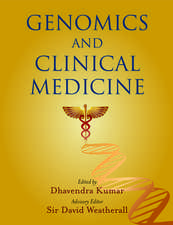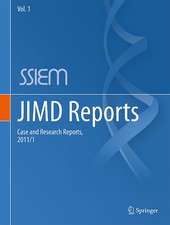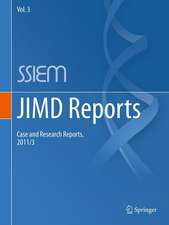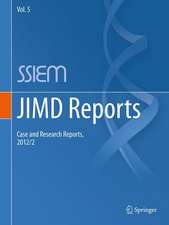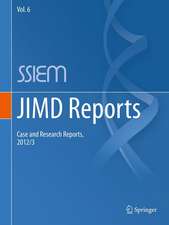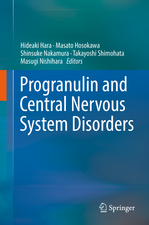Biophysical approaches to translational control of gene expression: Biophysics for the Life Sciences, cartea 1
Editat de Jonathan D. Dinmanen Limba Engleză Paperback – 15 oct 2014
| Toate formatele și edițiile | Preț | Express |
|---|---|---|
| Paperback (1) | 946.24 lei 6-8 săpt. | |
| Springer – 15 oct 2014 | 946.24 lei 6-8 săpt. | |
| Hardback (1) | 948.92 lei 6-8 săpt. | |
| Springer – 20 sep 2012 | 948.92 lei 6-8 săpt. |
Preț: 946.24 lei
Preț vechi: 1153.95 lei
-18% Nou
Puncte Express: 1419
Preț estimativ în valută:
181.05€ • 190.05$ • 150.28£
181.05€ • 190.05$ • 150.28£
Carte tipărită la comandă
Livrare economică 10-24 aprilie
Preluare comenzi: 021 569.72.76
Specificații
ISBN-13: 9781489987099
ISBN-10: 1489987096
Pagini: 332
Ilustrații: XII, 320 p.
Dimensiuni: 155 x 235 x 17 mm
Greutate: 0.47 kg
Ediția:2013
Editura: Springer
Colecția Springer
Seria Biophysics for the Life Sciences
Locul publicării:New York, NY, United States
ISBN-10: 1489987096
Pagini: 332
Ilustrații: XII, 320 p.
Dimensiuni: 155 x 235 x 17 mm
Greutate: 0.47 kg
Ediția:2013
Editura: Springer
Colecția Springer
Seria Biophysics for the Life Sciences
Locul publicării:New York, NY, United States
Public țintă
ResearchCuprins
X-ray analysis of prokaryotic and eukaryotic ribosomes.- A passage through the ribosome by Cryo-EM.- Molecular dynamics simulations of the ribosome.- Structural analyses of the ribosome by chemical modification methods.- Methods for studying the interactions of translation factors with the ribosome.- Riboproteomic approaches to understanding IRES elements.- Rapid kinetic analysis of protein synthesis.- Investigating RNAs Involved in Translational Control by NMR and SAXS.- Analyses of RNA-ligand interactions by fluorescence anisotropy.- Approaches for the Identification and Characterization of RNA-Protein Interactions.- A multidisciplinary approach to RNA Localization.- Virtual Screening for RNA-interacting Small Molecules.- The ‘fifth’ RNA nucleotide: a role for ribosomal RNA pseudouridylation in control of gene expression at the translational level.- Translational Control of Synaptic Plasticity and Memory.
Textul de pe ultima copertă
When quantum mechanics was first proposed a century ago, nobody could have anticipated how deeply it would affect our lives. Today, we are connected and powered through devices whose existence is predicated on the basic principles of this strange physics. Not even the biological sciences have escaped its reach. As scientists query the deepest mysteries of the living world, the physical scales probed and the types of questions asked are increasingly blurring the lines between biology and physics. The hybrid field of biophysics represents the new frontier of the 21st century.
The ribosome has been at the heart of three Nobel Prizes. Understanding its essential nature and how it interacts with other proteins and nucleic acids to control protein synthesis has been one of the central foundations in our understanding of the biology at the molecular level. With the advent of atomic scale structures, methods to visualize and separate individual molecules, and the computational power to model the complex interactions of over a million atoms at once, our understanding of how gene expression is controlled at the level of protein translation is now deeply ensconced in the biophysical realm. This book provides a premier resource to a wide audience, whether it be the general reader seeking a broad view of the field, a clinician interested in the role of protein translation in human disease, the bench researcher looking for state-of-the-art technologies, or computational scientists involved in cutting edge molecular modeling.
The ribosome has been at the heart of three Nobel Prizes. Understanding its essential nature and how it interacts with other proteins and nucleic acids to control protein synthesis has been one of the central foundations in our understanding of the biology at the molecular level. With the advent of atomic scale structures, methods to visualize and separate individual molecules, and the computational power to model the complex interactions of over a million atoms at once, our understanding of how gene expression is controlled at the level of protein translation is now deeply ensconced in the biophysical realm. This book provides a premier resource to a wide audience, whether it be the general reader seeking a broad view of the field, a clinician interested in the role of protein translation in human disease, the bench researcher looking for state-of-the-art technologies, or computational scientists involved in cutting edge molecular modeling.
Caracteristici
Consists of up-to-date and comprehensive reviews of research and relevant new imaging and structural approaches Addresses major advances in researching cell’s molecular machinery through analytical, computational, and imaging methods Focuses on developing biophysical approaches to studying control of gene expression at the translational level






